Native Cultivar
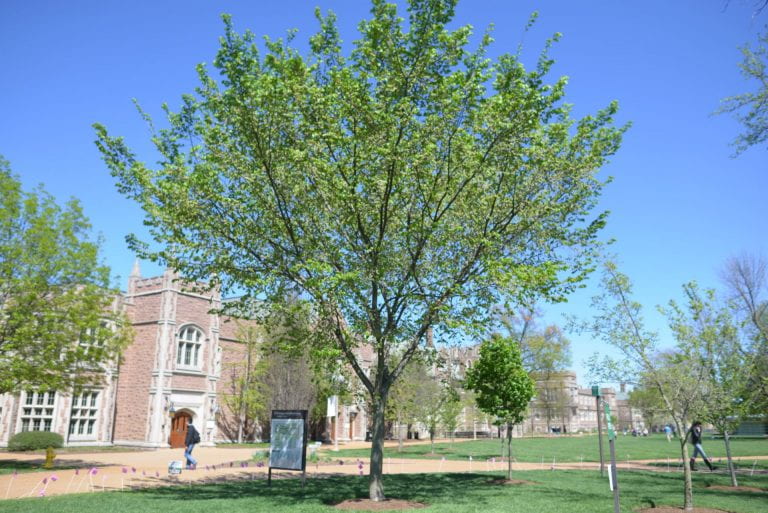
American Elm
Arbor Walk #31, Treekeeper ID #2408
The American Elm is native to much of Eastern North America and grows in low, moist areas and along streams across the state of Missouri.
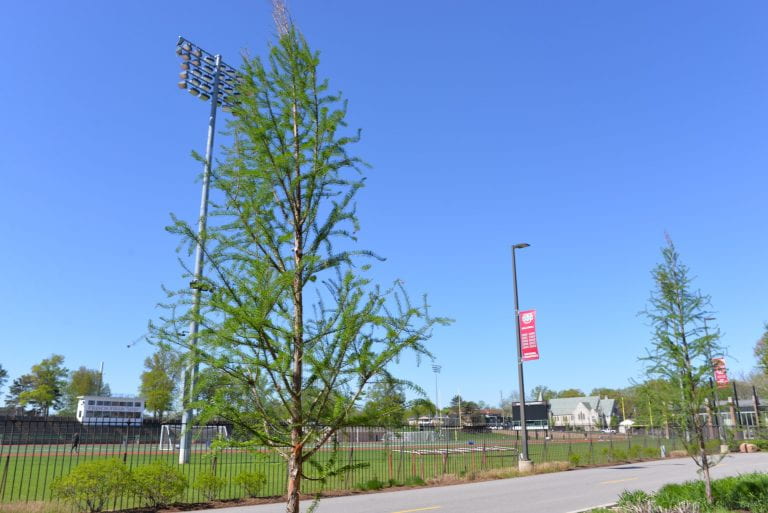
Bald Cypress
Arbor Walk #37, Treekeeper ID #2507
The Bald Cypress is the state tree of Louisiana. Despite its resemblance to a needled evergreen tree in the summer, it is actually deciduous. The 'Mickelson' is a cultivar of the Bald Cypress, and has a narrower shape and denser foliage than the native species.
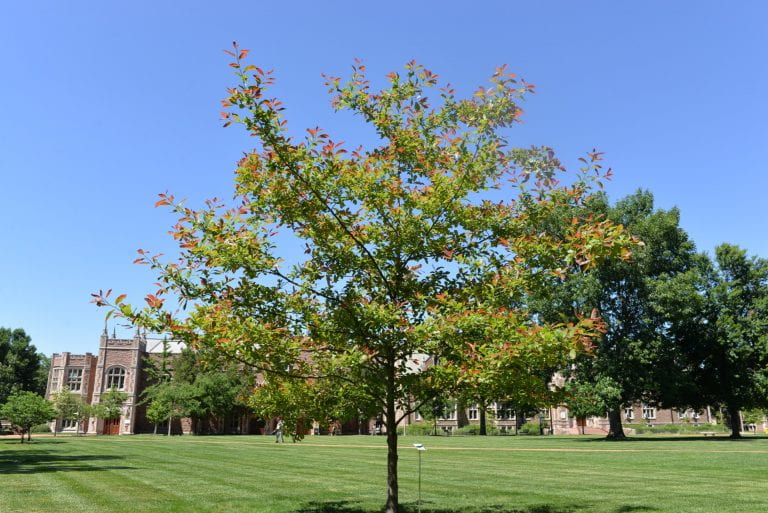
Black Gum
Arbor Walk #32, Treekeeper ID #2247
The Black Gum, also called Tupelo, is a Missouri native and flexible mid-western species capable of growing in both standing water and rocky slopes.
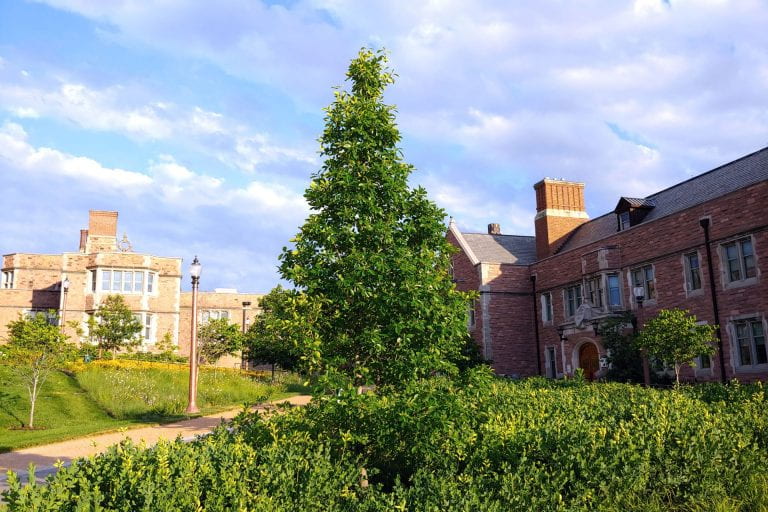
Black Gum
Arbor Walk #91, Treekeeper ID #5922
The Black Gum, also known regionally as Black Tupelo, is a part of the Nyssaceae family, which used to be under the dogwood family.
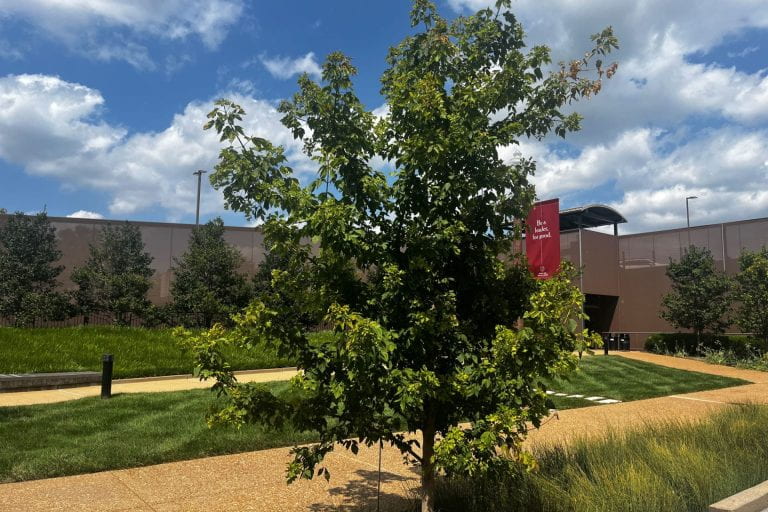
Boxelder Maple
Arbor Walk #118, TreeKeeper ID #6843
Boxelder Maple is notable because of the usual leaves this species has compared to all other native maples. Instead of the normal simple leaf, it instead has compound leaves, which means it has leaflets.
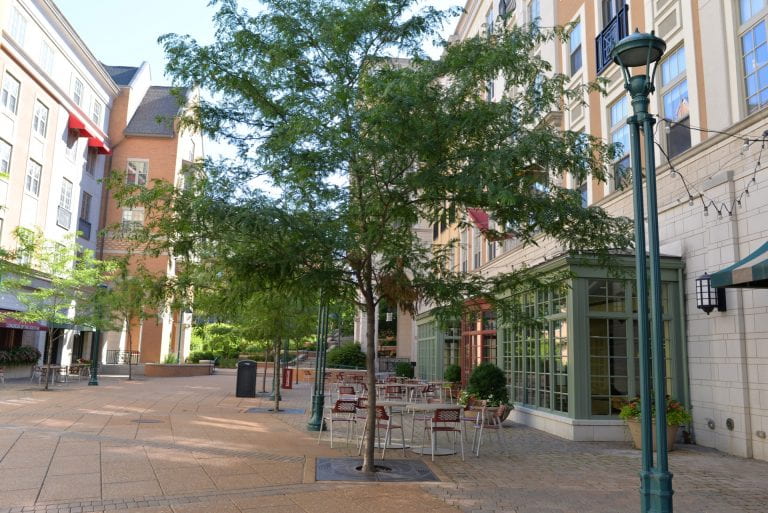
Common Thornless Honeylocust
Arbor Walk #78, Treekeeper ID #3229
The Honeylocust is a tough, medium-sized shade tree that usually grows around 60′ to 80′ tall. It has greenish-yellow to greenish-white flowers that appear in May or June.
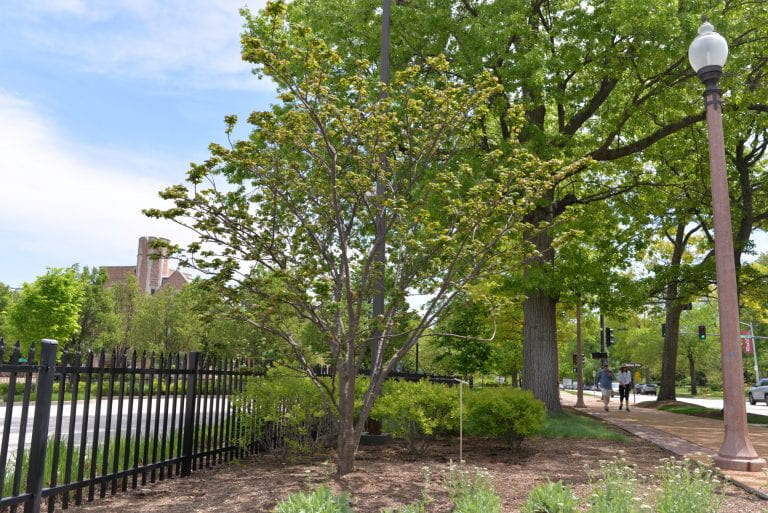
Eastern Redbud
Arbor Walk #38, TreeKeeper ID #3141
This deciduous understory tree is the state tree of Oklahoma and is native to Missouri and much of the Eastern and Central US. It grows in medium moisture, medium fertility soils.
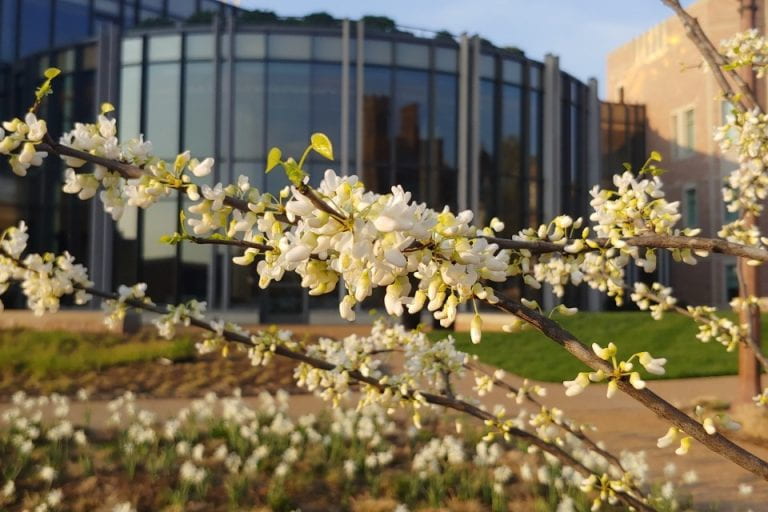
Eastern Redbud, White
Arbor Walk #86, Treekeeper ID #5725
White Bud is a native cultivar to the Missouri Area with heart-shaped leaves. Its parentage comes from the native Red Bud seen throughout Missouri.
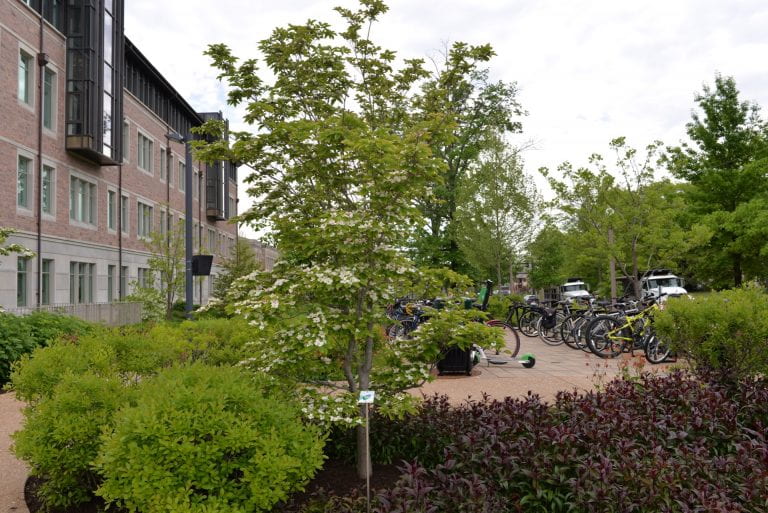
Flowering Dogwood
Arbor Walk #53, Treekeeper ID #1410
Often claimed as the most beautiful of North America’s native flowering trees, the Flowering Dogwood is the state tree of both Missouri and Virginia. Its early-spring blooms of showy white petals surrounding tiny clusters of yellow dogwood flowers are among the tree's most dramatic characteristics.
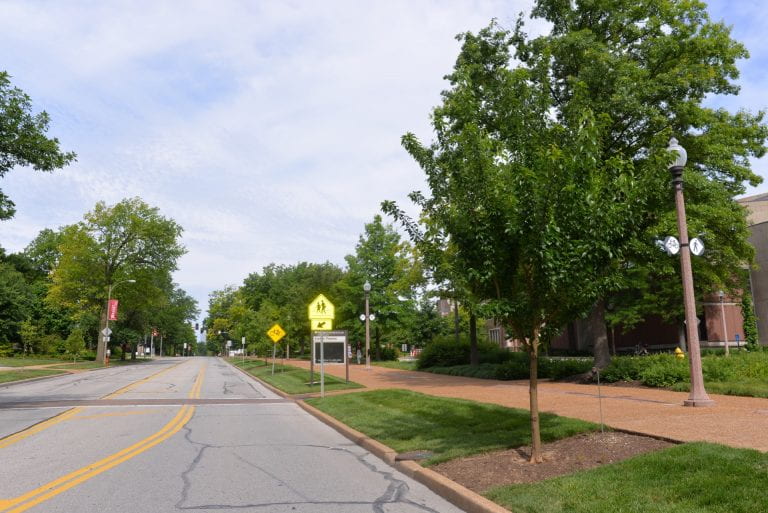
Osage Orange
Arbor walk #45, TreeKeeper ID #2621
This medium-sized tree has a short trunk and rounded crown. it produces large fruit (8-15 cm in diameter) which is roughly spherical, bumpy, and turns bright yellow-green in the fall.
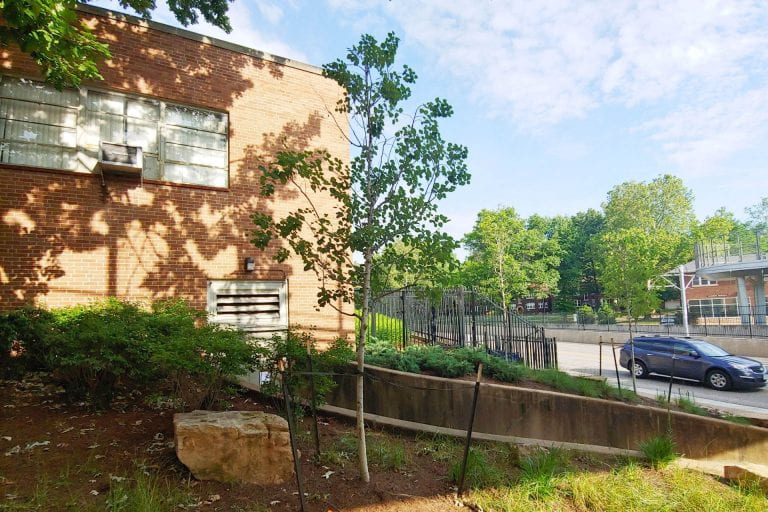
Quaking Aspen
Arbor Walk #109, TreeKeeper ID #5736
The Quaking Aspen gets its name due to its trembling leaves, which are caused by the tree's flattened, flexible petioles. This tree is in the Salicaceae (Willow) family and is native to Missouri; it is also recognized as having the widest geographical distribution of any tree in North America.
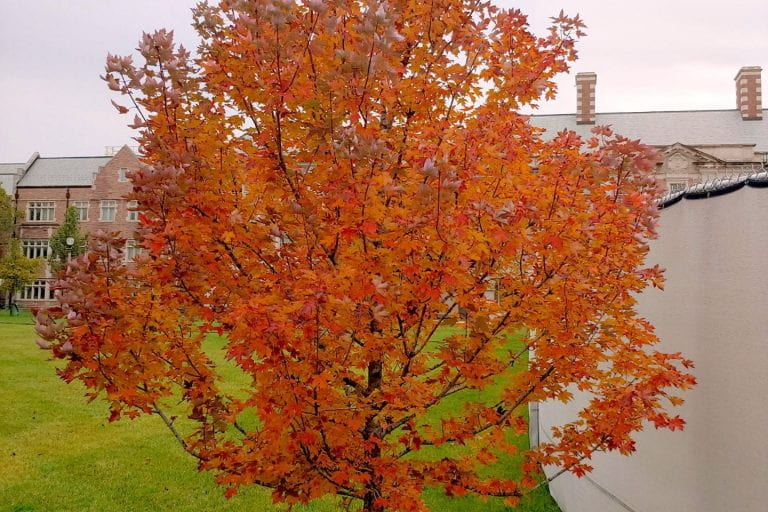
Red Maple
Arbor Walk #102, TreeKeeper ID #5833
The REDPOINTE is a cultivar of the Red Maple species, which is native to areas in Eastern North America. It’s a large deciduous tree known primarily for its bright red leaf color that can only be described as brilliant during the fall. The flowers, seeds, and twigs on the tree also have red color spread throughout.
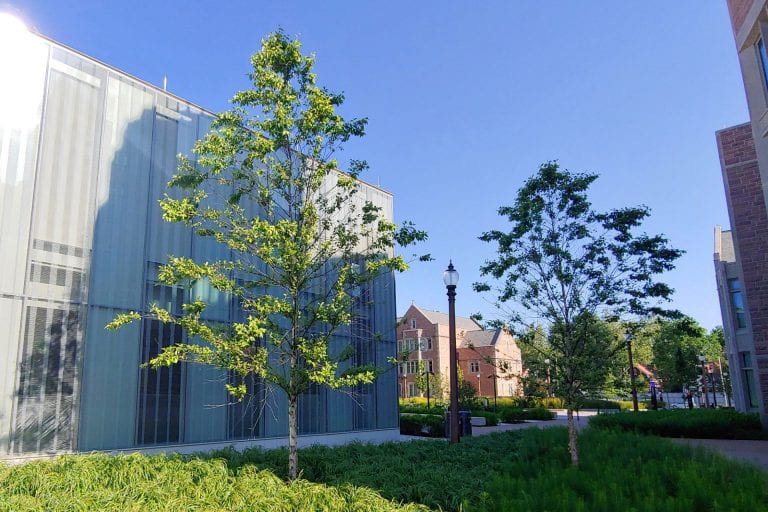
River Birch
Arbor walk #93, TreeKeeper ID #5649
A tree native to the Eastern and Midwestern United States, River Birch is also known as black birch. As a relatively heat resistant tree in the birch family, the river birch tree's distribution extends further south than most other birch trees.
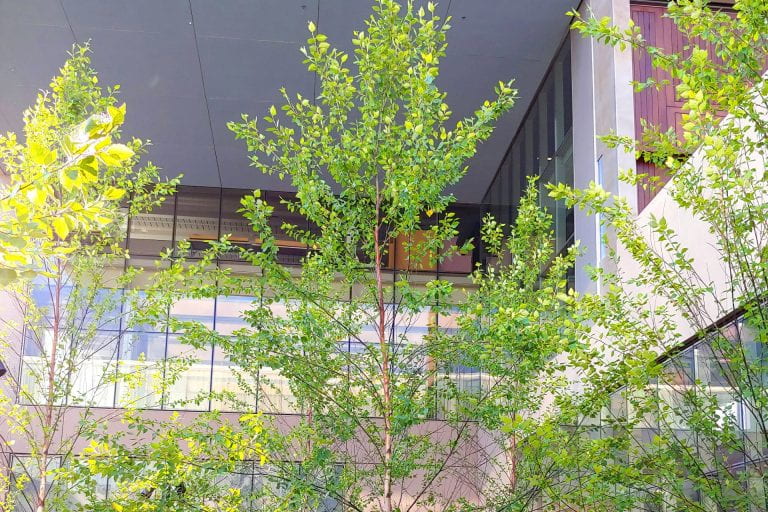
River Birch
Arbor Walk #94, TreeKeeper ID #5861
The 'Cully' cultivar of the River Birch was discovered in a St. Louis, Missouri suburb and introduced by Earl Cully, a well known arborist from Illinois. The ‘Cully’ grows 40’ tall and 40’ wide.

Roughleaf Dogwood
Arbor Walk #159, TreeKeeper ID #6101
While the Flowering Dogwood is the most well-known of our Missouri dogwoods, being the official state tree of Missouri, the Roughleaf Dogwood may often be the first dogwood you see in natural areas around St. Louis.
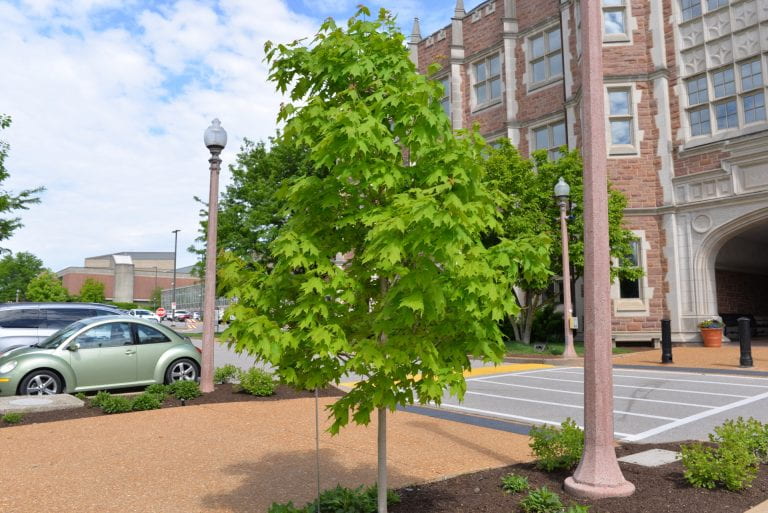
Sugar Maple
Arbor Walk #46, Treekeeper ID #2067
This iconic tree is native to much of Eastern North America, where it is a dominant component of hardwood forests from Canada to Missouri.
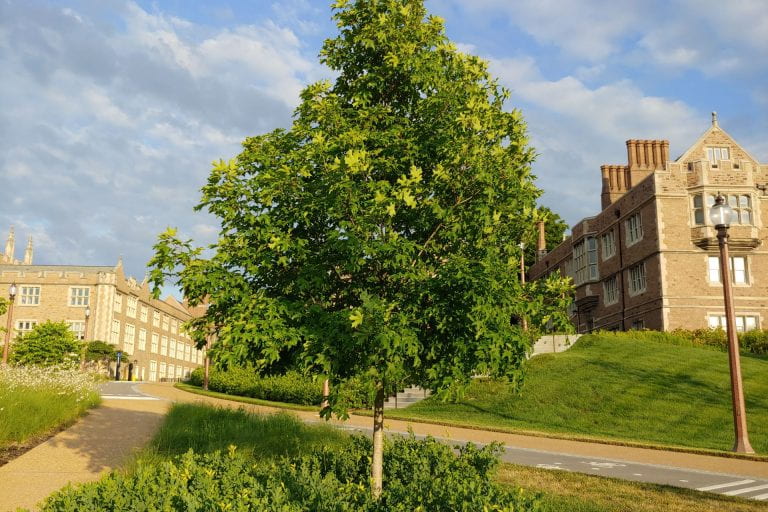
Sugar Maple
Arbor Walk #87, Treekeeper ID #5825
'Bailsta' is a cultivar of the Sugar Maple. It can grow to 50' tall by 40' wide, with a much wider, more rounded form than most Sugar Maples.

Sugar Maple
Arbor Walk #124, TreeKeeper ID #6490
The 'Monumentale' cultivar incorporates a unique columnar shape to the Sugar Maple while still retaining its iconic leaves and fall colors.
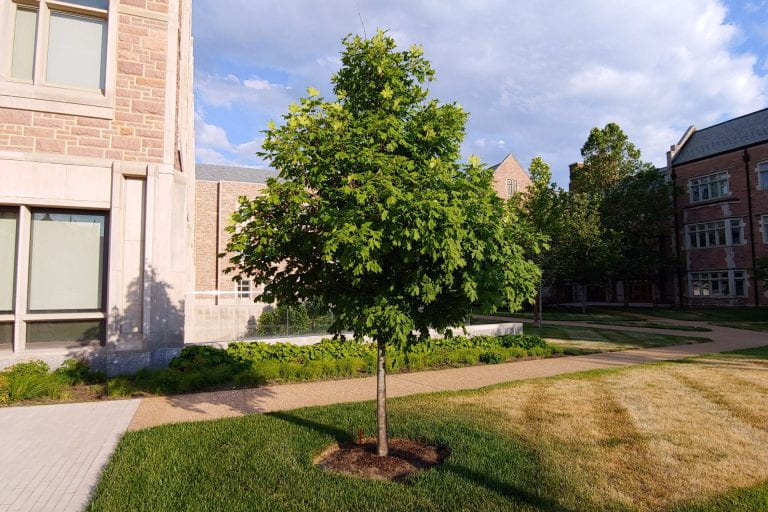
Sugar Maple ‘Caddo’
Arbor Walk #98, Treekeeper ID #5662
This tree is in the Sapindaceae family and is one of the easiest and strongest maples to grow. Caddo Maples are native to southwestern Oklahoma and are resistant to heat and drought.
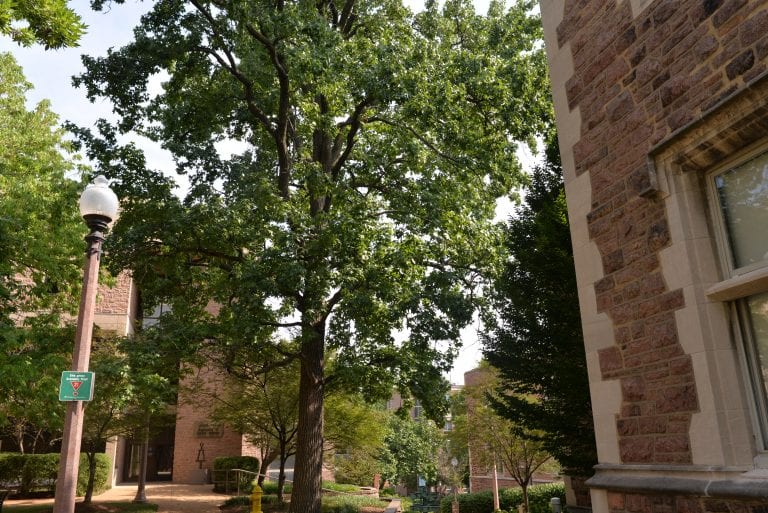
Sweetgum
Arbor Walk #15, Treekeeper ID #1439
This tree's star shaped leaves provide great fall color. Its fruits are the spiky "gum balls" which can hang on the tree all winter.
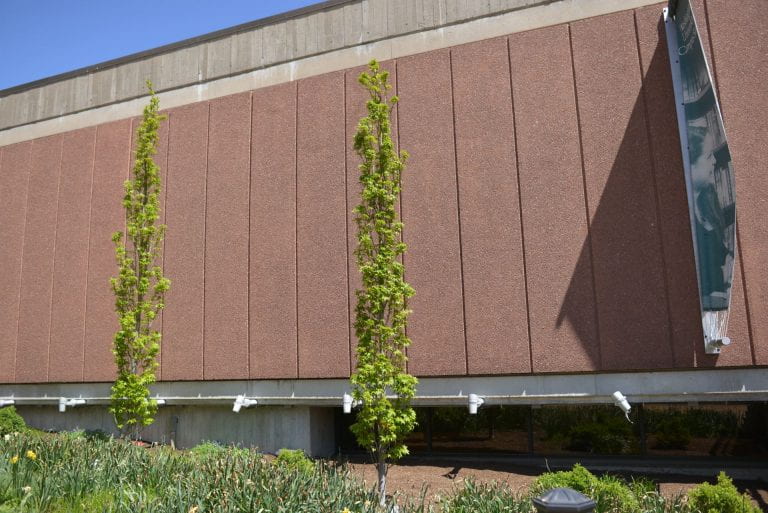
Sweetgum
Arbor walk #35, Treekeeper #2995
This low-maintenance deciduous shade tree is native to much of the Eastern US and in Southeast Missouri, usually in low, wet, woodland areas or along stream beds. It has a variety of human-use applications such as chewing gum, incense, perfume, and medicine.
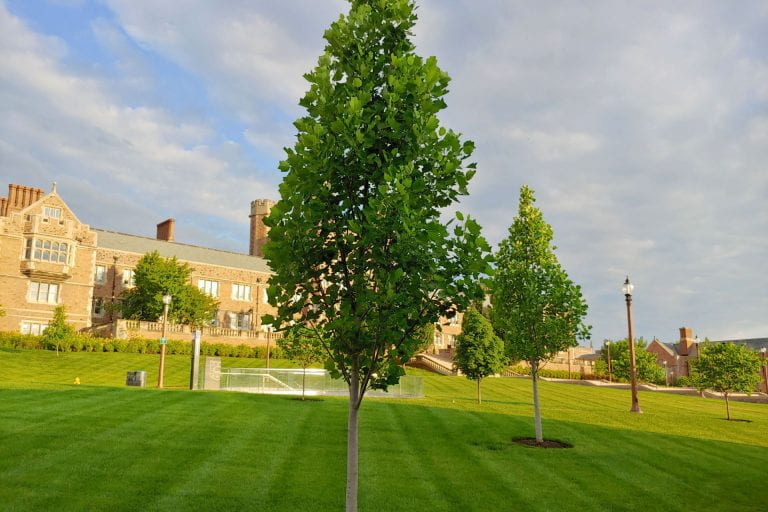
Tulip Tree
Arbor Walk #88, Treekeeper ID #5650
Emerald City® is a commercially developed cultivar of the Missouri native Tulip Tree. J. Frank Schmidt & Son Co. created the cultivar to be cold-tolerable and stand straight, making it suitable to city sized landscapes. The trees grow to be 55' tall and 25' wide. The foliage is an attractive glossy dark green. The trunk develops furrowed fissures as they reach maturity. Tree #88 was planted in a triad with two other Emerald City® Tulip trees.
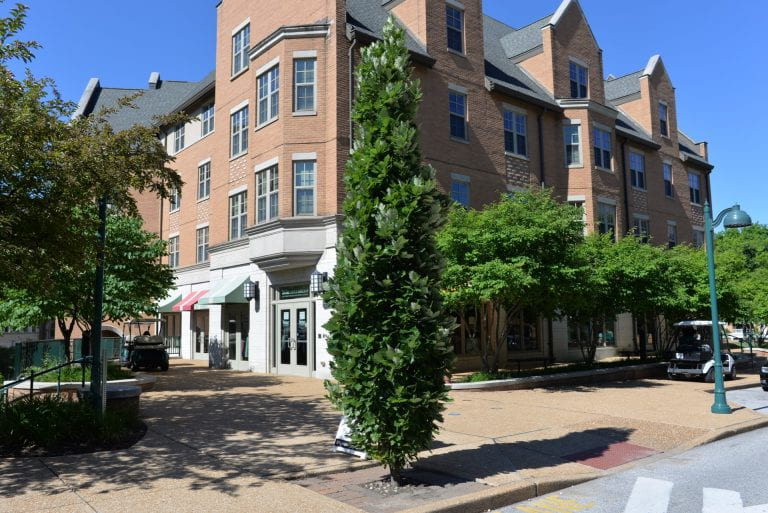
Ware’s Oak ‘Kindred Spirit’
Arbor Walk #79, TreeKeeper ID #2226
Selected from a batch of chance seedlings collected from the campus of University of Missouri Columbia, this cultivar is a cross between the English Oak and the Swamp White Oak. The tree grows to quite a large size with a distinct columnar form.